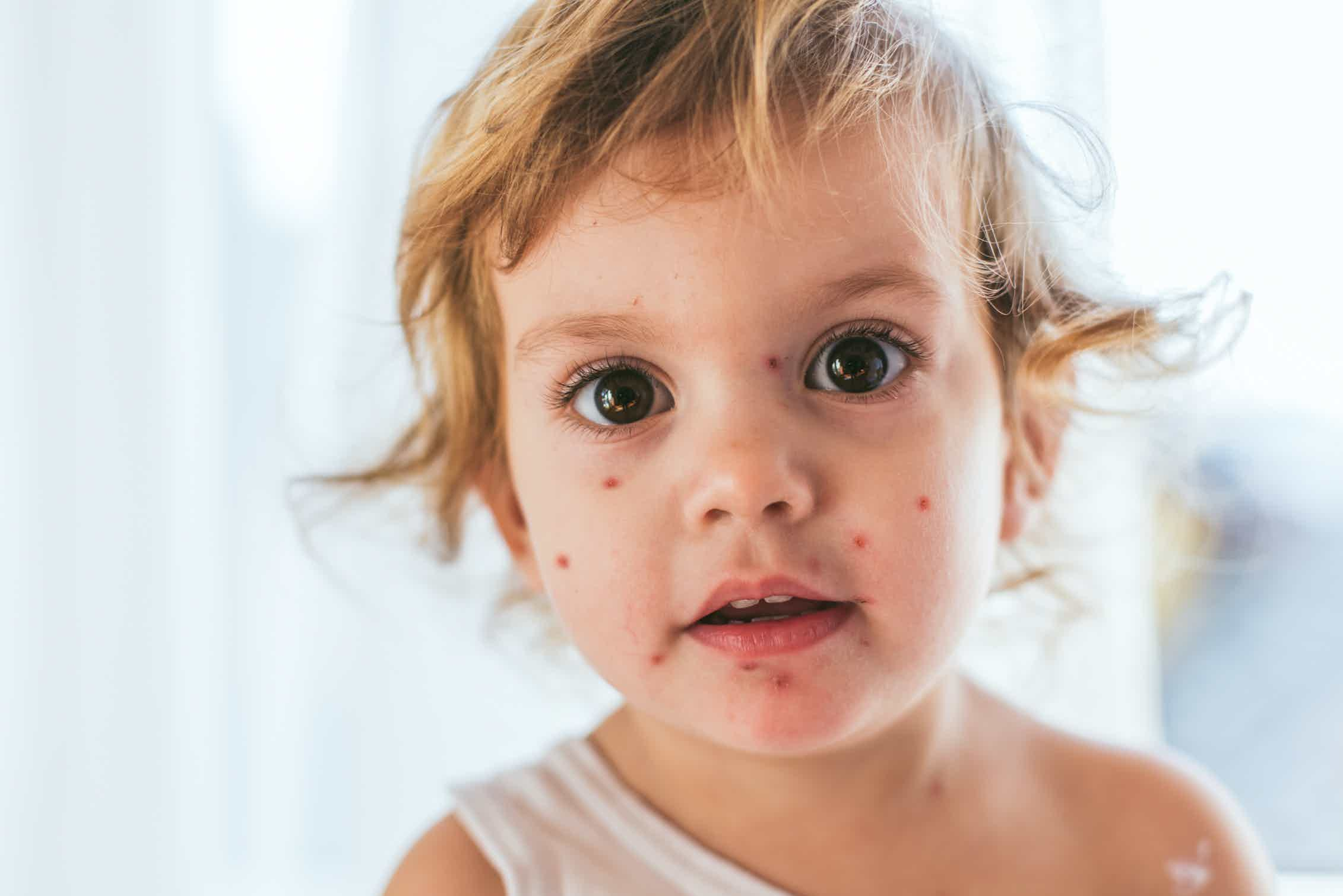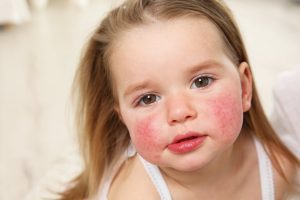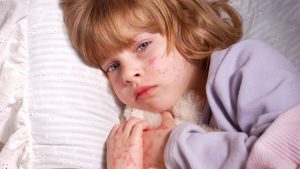
Childhood illnesses with rash. Vaccinations and Immunity Assessment
Most childhood infections are accompanied by various rashes. A rash is a general reaction of the body to the toxic effects of the pathogen and its waste products, and the child has an accelerated metabolism, wide vessels and good blood circulation.
It is best to get sick with childhood diseases in childhood. Firstly, this is how the child’s immunity is formed and protection from the transferred infections in the future. Secondly, childhood illnesses are much more severe in adulthood, and many of them are especially dangerous during pregnancy.
All infections are highly infectious, with a course with an increase in temperature and signs of a cold. Often, the characteristic signs of a rash make it possible to distinguish them from each other. Consider the main childhood diseases and their distinctive features:
Measles
Recently it was believed that measles had been defeated, but recently outbreaks of it have been increasing. This is due to the rejection of mandatory preventive vaccinations. In fact, measles is a serious illness, especially during adolescence and adulthood. It proceeds with complications: pneumonia, otitis media, and often damage to the kidneys, liver and brain. May lead to deafness and blindness. The rash with measles is maculopapular (papules are small elevations on the skin), appears on the 3rd day of illness, begins behind the ears and on the face and appears in stages from top to bottom, may have different sizes (polymorphic). Before the appearance of rashes, you can see white dots on the mucous membrane of the oropharynx, resembling semolina, with a red rim, they are called Filatov-Koplik spots.
Chicken pox
It is caused by the herpes simplex virus type III. Most children get sick between the ages of 2 and 7, and it is more difficult to tolerate at an older age. Everyone knows that the rash with chickenpox is in the form of vesicles (vesicular). It starts from the scalp and spreads throughout the body. First, spots appear, which successively turn into papules and itchy vesicles with transparent contents, leaving behind crusts. All these elements can be simultaneously observed on the child’s body. In adults, the infection can be of the shingles type.
Rubella
It is highly contagious, often mild in both children and adults, so it can go unnoticed. It is especially dangerous during pregnancy, as it can lead to the formation of fetal anomalies for up to 12 weeks. Typical manifestations: enlargement of the occipital and posterior cervical lymph nodes, a small macular rash, without pain or itching.
Scarlet fever
It is caused by group A beta-hemolytic streptococcus. It is manifested by angina and a typical small-point rash against a background of pronounced redness of the skin. Most of the elements of the rash are in the flexion surfaces and they tend to merge. The nasolabial triangle always remains free from the rash. Another sign is a bright red tongue.
Infectious erythema
It is caused by parvovirus B19. In children, it is widespread, proceeds easily, with signs of a cold, headache is possible. A distinctive feature is a bright reddening of the cheeks, which is why parvovirus infection is better known as “slap disease”. Dangerous in the first trimester of pregnancy.
Roseola
It is caused by the herpes simplex virus type VI. Mostly children under 5 years old are sick. The disease is rarely recognized because in the first 3 days, the temperature rises sharply to 39-40 degrees, on the 4th day it drops to normal numbers without signs of a cold, and a rash resembling rubella appears. Few people realize that these are manifestations of one disease. In adults, it causes chronic fatigue syndrome.
We have analyzed the typical manifestations of the rash. But recently, the classic course of the disease has rarely been encountered. In addition, rashes can be with other infections: caused by the Epstein-Barr virus, cytomegalovirus, with yersiniosis, viral hepatitis, and so on. The most correct position of a parent in case of a rash in a child is to call a doctor at home or an ambulance to exclude severe, life-threatening infections, for example, meningococcal.
What are vaccinations for?
Measles vaccination is mandatory and is part of the National Immunization Schedule. There are vaccines for chickenpox and rubella, and for the latter, its mandatory use for girls is being discussed.
How do you know if there is immunity to childhood infections?
For this purpose, antibodies are determined – immunoglobulins of class G (IgG). These are proteins of the immune system that appear in the body when the pathogen enters the body and remain for a very long time or for life. Their identification indicates good immunity and protection against re-infection.
But it should be remembered that IgG can be determined with the current disease. If there is a clinic, then IgM and IgA are simultaneously determined, as well as the identification of the pathogen by PCR.
To whom is the definition of immunity to childhood infections indicated in the first place?
Against measles – everyone. If IgG is not detected, therefore, there is no protection and revaccination is recommended in order to avoid contamination.
When planning pregnancy – if there is no immunity, vaccination is indicated to form protection against infections that can cause intrauterine damage to the fetus (rubella, parvovirus B19)
Early in pregnancy (first 12 weeks). Infection with infections during this period is most dangerous, since all organs and tissues of the baby are laid). If IgG https://en.wikipedia.org/wiki/Immunoglobulin_G is detected, there is no risk of infection.
Most childhood infections are accompanied by various rashes. A rash is a general reaction of the body to the toxic effects of the pathogen and its waste products, and the child has an accelerated metabolism, wide vessels and good blood circulation. It is best to get sick with childhood diseases in childhood. Firstly, this is…